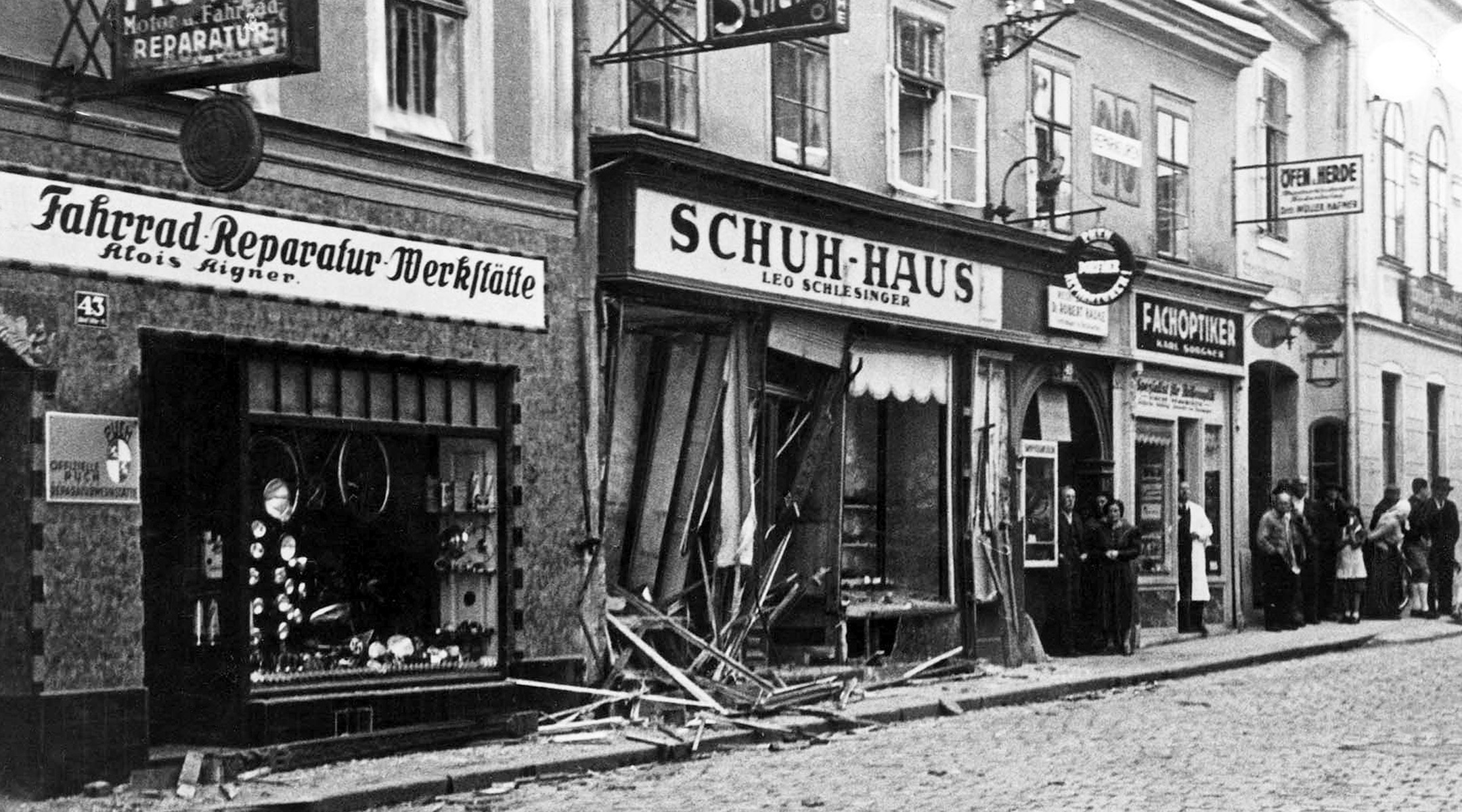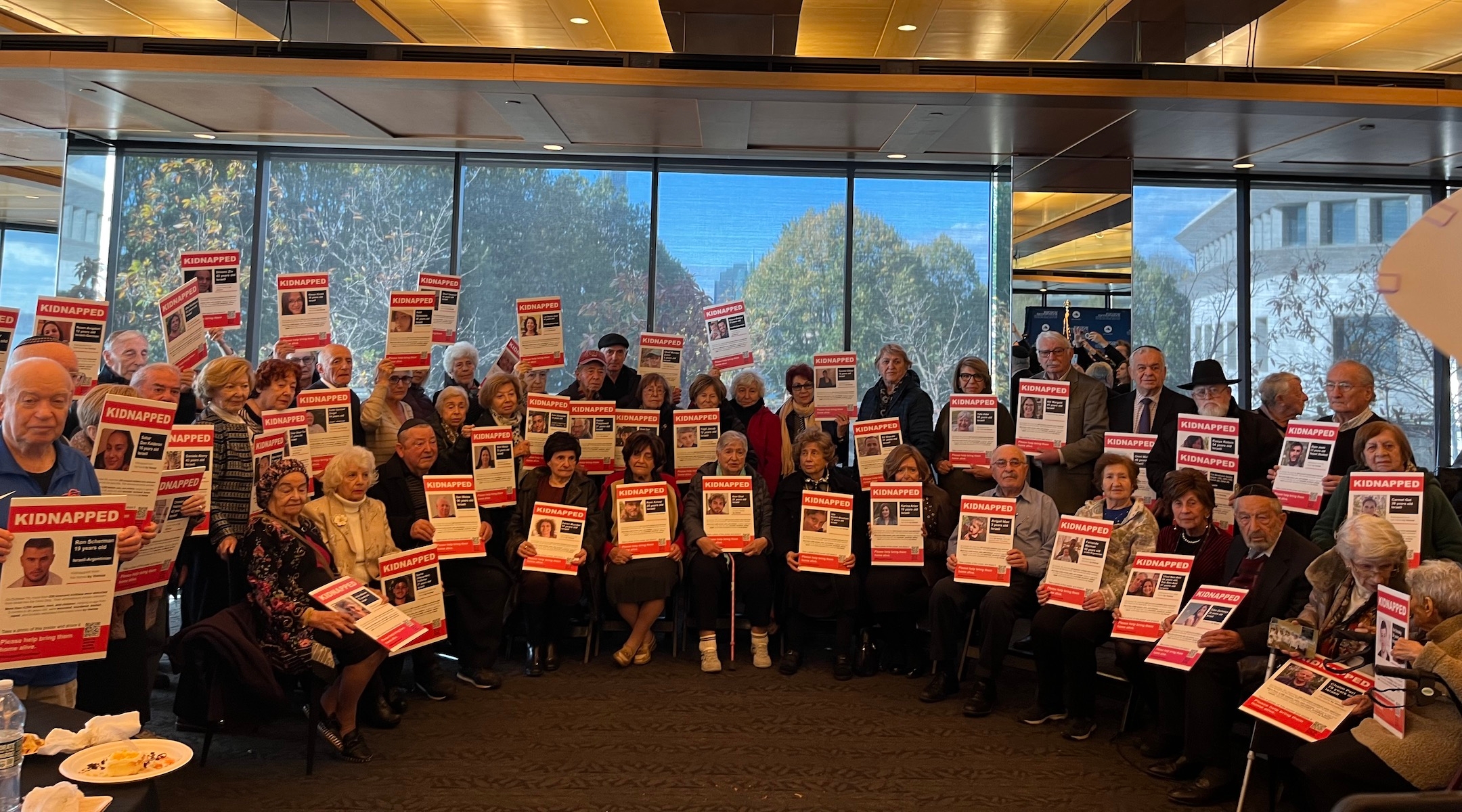On 85th anniversary of Kristallnacht, Holocaust survivors say they fear familiar antisemitism
“It just brought back so many memories,” one Holocaust survivor said about learning about Hamas’ Oct. 7 attack on Israel

A view of a Jewish-owned shoe store that was destroyed by the Nazis on Kristallnacht in Vienna, Nov. 10, 1938. (History/Universal Images Group via Getty Images)
(JTA) — The comparisons are easy to draw: broken glass, burned buildings, shuttered businesses, dead Jews.
Eighty-five years after Kristallnacht, the anti-Jewish riots that marked a brutal turning point in the Nazi campaign of persecution in Germany, Holocaust survivors say what happened in southern Israel on Oct. 7 — and how they have seen the world respond since — reminds them of what they experienced in their childhood.
“When it all happened on October 7th, I couldn’t believe it,” Maud, who lives in Southern California, said in a testimony shared this week by March of the Living, a group that takes groups to visit concentration camp sites in Europe. “I’ve had sleepless nights since and it just brought back so many memories. It is so visual of what I saw as a child. … I have a hard time coping with what I read and what I hear and what I see on TV. I can’t come to terms with it. It’s so hard.”
March of the Living shared testimonies from eight survivors in four countries in advance of the anniversary, which is typically marked by somber ceremonies in which government officials reaffirm their commitments to the post-Holocaust vow of “Never again.”
This year, that rallying cry may feel harder to sustain, coming just a month after Hamas’ attack on Israel left 1,400 people dead, thousands wounded and hundreds held hostage in Gaza. Some victims have still not been identified because of the brutality inflicted on their bodies, which included, according to people who worked at the massacre sites, burning that echoed the most vivid horrors of the Holocaust. The attack and Israel’s military response have also unleashed rising antisemitism around the world.
“It started with words and continued with actions,” Nate, from Canada, said about his experience as a child in Poland, where he survived Auschwitz but most of his family members did not. “I am devastated to see how Jews are being attacked today. Jews are not safe. I saw where antisemitism can lead to and I am very concerned.”
In a sign of how significantly the current climate is affecting survivors, the March of the Living communicated late Wednesday, after some testimonies had already been published, that the survivors did not want to have their full names or pictures published. Many have long been public speakers sharing their stories, but at the current moment, the organization said, they were concerned that exposing themselves would risk their personal security.
The testimonies are not the first in which Holocaust survivors have drawn straightforward comparisons between their childhood traumas and what happened on Oct. 7. Just days after the attack, survivors held a fretful press conference at the U.S. Holocaust Memorial Museum in Washington, D.C.
“This is not what we expected in this final chapter of our lives, as we contemplate our legacy, the future of Holocaust memory and education, and the future of our people,” Nat Shaffir, 85, who survived the Holocaust in Romania said at the event.

A group of Holocaust survivors pose with posters of the hostages that were kidnapped by Hamas at the Museum of Jewish Heritage: A Living Memorial to the Holocaust, Nov. 1, 2023. (Julia Gergely)
And last week in New York, hundreds of Holocaust survivors posed with pictures of the roughly 240 people being held hostage by Hamas in Gaza, as part of a worldwide campaign to keep attention on their plight.
“I’m back there all over again,” Toby Levy, 90, said at the Museum of Jewish Heritage, where she is a longtime docent. “This is how it started with the Germans.”
Kristallnacht, which means “Night of Broken Glass,” was a series of Nazi government-coordinated anti-Jewish riots that swept through virtually every town and city across Germany beginning Nov. 9, 1938. (In Germany, it’s increasingly known as Reichspogromnacht to avoid the potentially beautiful images conjured by the English translation.) Over several days, rioters destroyed hundreds of synagogues, looted thousands of businesses and killed at least 91 Jews; 30,000 Jewish men were sent to concentration camps.
Kristallnacht marked the end of any vestige of security for German Jews and moment of acceleration in the Nazis’ genocidal campaign against them, which would result in the murder of 6 million Jews in Europe before the end of World War II in 1945.
“What Hamas did to the Israelis on October 7th is as cruel, barbaric, and tragic as what the Nazis did to the Jews 80 years ago,” Benjamin, a survivor who lives in Greece, said in his March of the Living testimony. “When I see Jewish homes marked with the Magen David, it brings back nightmarish memories from my childhood, reminding me of swastikas and concentration camps.”
But he finished on a more hopeful note: “My message is that we, the Jewish people, have endured significant suffering throughout our history, with the Holocaust being the darkest period. Though the current times are challenging, thanks to the brave IDF, a sense of normalcy will soon return to the State of Israel and the Jewish Diaspora.”
This article originally appeared on JTA.org.
















